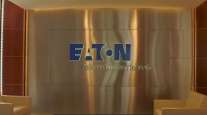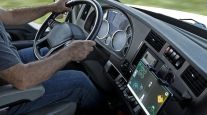Staff Reporter
Eaton Merges Units in Preparation for Electrification Push
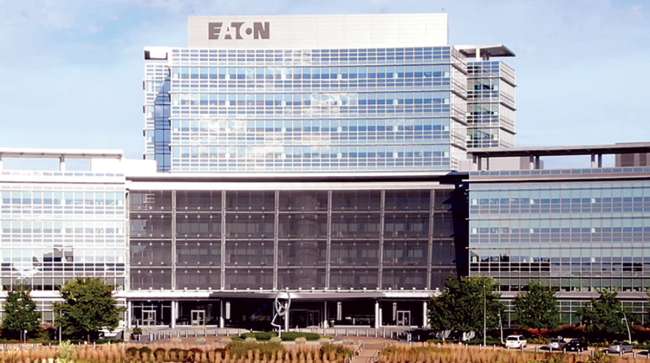
[Stay on top of transportation news: Get TTNews in your inbox.]
Eaton Corp. is preparing for the gradual transition of heavy-duty trucking away from diesel engines by integrating two segments of its operations, and ramping up production of transmission and brake systems needed for trucks using alternative fuels, according to the executive in charge of the new unit.
Dublin-headquartered Eaton is introducing products including multispeed transmission systems and a reusable fuse for battery-electric trucks as part of an effort to keep the pricey vehicles fleet owners buy on the road, Mobility Group President Pete Denk told Transport Topics in an interview.
Denk, who took the reins at the component manufacturer’s Vehicle Group in April, is in charge of merging that group and Eaton’s eMobility unit in an effort to support increasing degrees of electrification.
“What we were seeing is that we had this Vehicle Group who had been making product for 50, 60, 70 years for the automotive and commercial vehicle world and this eMobility team, which was a very new part of it, very new to Eaton and we weren’t leveraging ourselves well enough,” Denk told TT.

Denk
“We weren’t going across and using all that experience on the new products. And so, the vision is to pull those together,” he said. “There’s profit in the legacy business and where it is. And then we need them to be ready [for] this EV transformation as it happens.”
Eaton’s Vehicle Group reported second-quarter 2023 sales of $751 million, up 6% from $708 million in Q2 2022, the company said Aug. 1. The eMobility unit posted an 18% year-over-year increase in sales in Q2 to a record $161 million from $136 million a year earlier.
The timing of the electrification transformation is still up in the air, said Denk. “I think it’s really important that we manage to stand on both sides of this river and be ready for whatever way it goes over the next decade or maybe even longer before we really finalize how this is going to happen.”
A key part of the legacy Eaton business is transmission systems. “So, obviously you associate transmissions with Eaton and what we’re doing and we’ve done over the last couple years is get a transmission ready for the EVs. And so, we’re working very closely with our customers to get that technology ready to go. We’re testing. We have customers,” Denk told TT on Aug. 25.
While Denk is new to his role, Technology Planning and Government Affairs Director Mihai Dorobantu has been with Eaton for 18 years and in his role within the Vehicle Group and now the Mobility Group for over 10 years.
Dorobantu is in charge of shepherding Eaton’s technology strategy, including EV transmission work since around 2014.
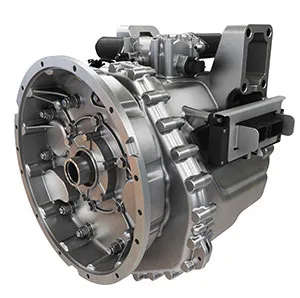
Eaton is working on transmissions for electric commercial vehicles. (Eaton Corp.)
“So, we quickly discovered that for commercial vehicles, the initial dream of a single-drive, very simple electric motor that drives directly the wheels or through some reduction is directly connected to the wheels all the time and completely simplifies the controls of the vehicle … does not translate to commercial vehicles and the heavier the vehicle, the less it translates,” he told TT Aug. 30.
“We asked ourselves a question: How many speeds do you need? We knew that you needed two, but is it three? Is it four? Is it five? Is it 10? How many speeds do you actually need to satisfy commercial vehicle needs?” he said.
“We found out that for most commercial vehicle applications, three speeds are probably enough,” said Dorobantu. “Our experience is that three speeds theoretically is what you need and then probably four speeds is what you actually want to have, because you really want to have one deep gear for those odd situations, a high grade launch in muddy or snowy conditions, under very heavy weights.”
The company is working with truck manufacturers, particularly in California. A scaling up in demand is expected to start around 2027, Dorobantu said.
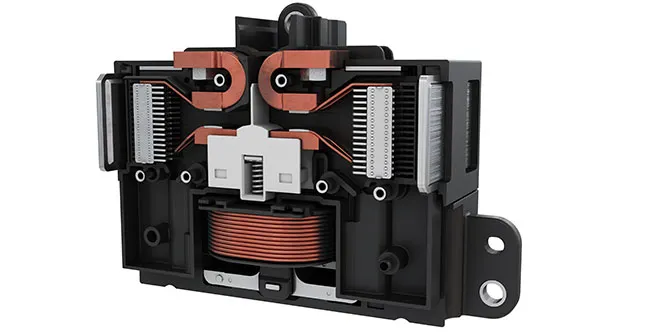
Eaton's breaktor is "a reusable for an EV," Denk says. (Eaton Corp.)
Another example of technology Eaton intends to introduce for heavy-duty trucking customers refreshing their fleets with battery-electric vehicles is known as a breaktor.
“What this is, is basically a reusable for an EV, and so what happens today is when you have an overcurrent or a problem … what has to happen is the [vehicle] has to be disconnected or disassembled” before being put back together, said Denk, adding that it was first introduced for passenger vehicles after initially sitting on a shelf since 2016 at the company’s electrical division.
But if a truck is off the road, it is a bigger problem than if a passenger vehicle sits idle, costing a fleet owner dollars every minute the vehicle is sidelined.
“A technology like a breaktor in the truck world will be a much easier business case, because we’re going to be able to leverage the three to five million of these we’ll be making a year,” he said. “And so that breaktor will be a very key part of what we’re delivering and working with our truck OEMs in the coming years.”
Want more news? Listen to today's daily briefing below or go here for more info:


